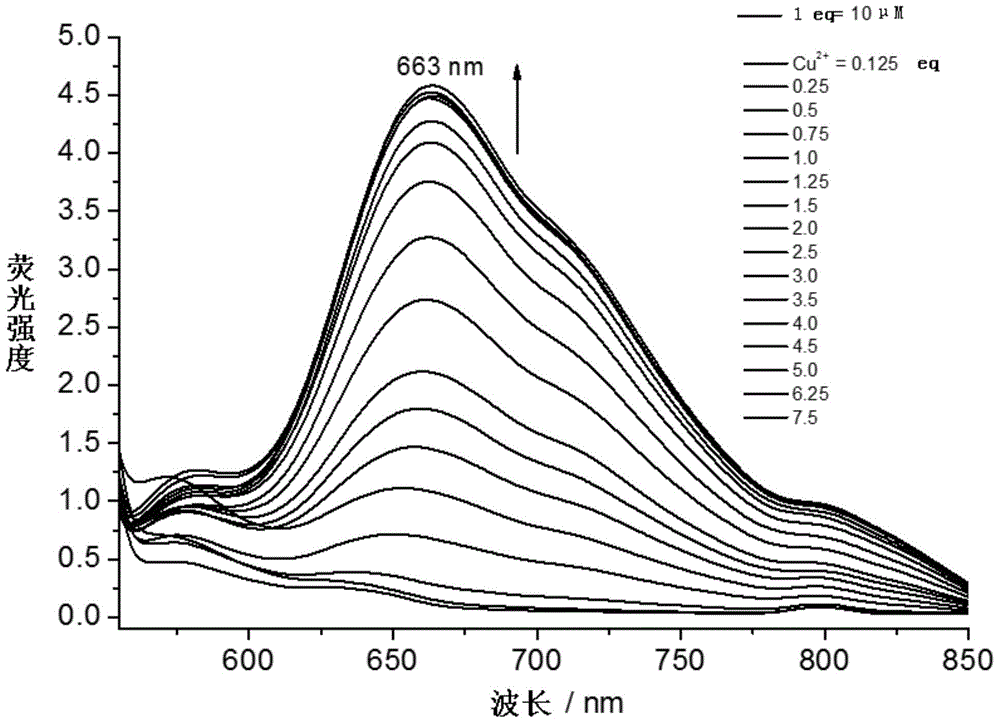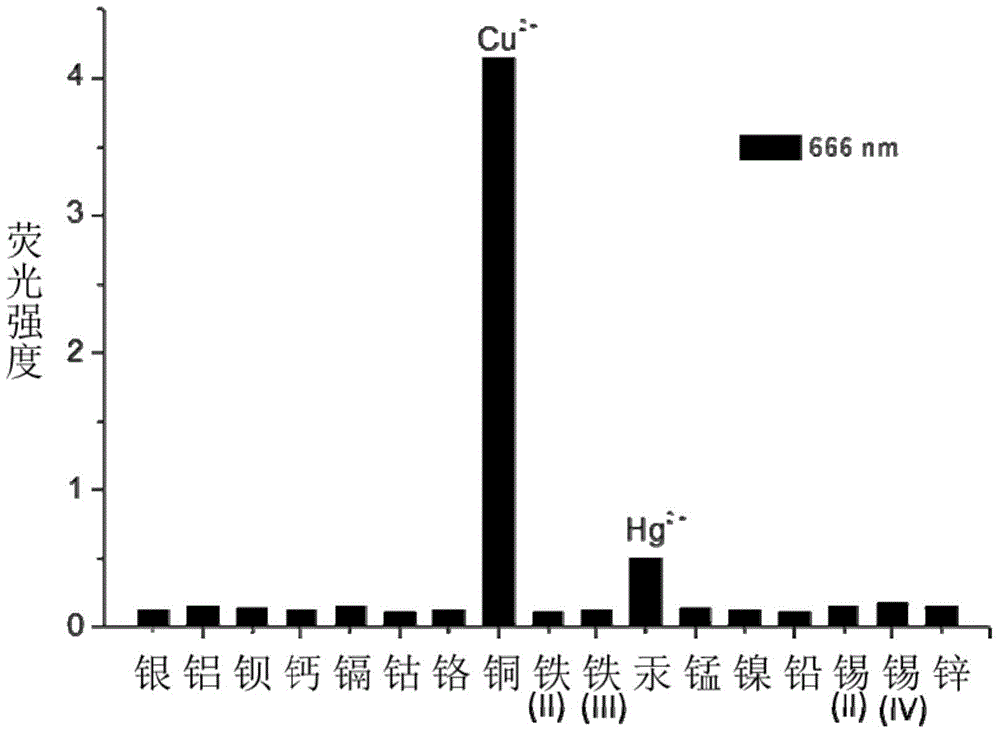Novel high-selectivity fluorescence probe for bivalent copper ions as well as preparation method and biological application of novel high-selectivity fluorescence probe
A divalent copper ion, high-selectivity technology, applied in fluorescence/phosphorescence, chemical instruments and methods, luminescent materials, etc., can solve the problem of lack of near-infrared luminescent fluorescent probes, low biological application value, and insufficient sensitivity of detection signals, etc. problems, to achieve the effect of simple preparation method, easy identification and obvious phenomenon
- Summary
- Abstract
- Description
- Claims
- Application Information
AI Technical Summary
Problems solved by technology
Method used
Image
Examples
Embodiment 1
[0042] A novel highly selective divalent copper ion fluorescent probe has a structure shown in formula (I):
[0043]
[0044] The reaction scheme is as follows:
[0045]
[0046] The preparation process comprises steps as follows:
[0047] (1) Compound 1 (0.377g, 1.0mmol) and p-cyanobenzaldehyde (0.157g, 1.2mmol) were reacted in 20ml of acetic acid at 50°C for 12h to obtain a dark solution, and the solvent was removed by rotary distillation. Dissolved in methyl chloride, separated by column chromatography with a mixed solvent of dichloromethane and methanol to obtain compound 2; yield: 50%. 1 H NMR (400MHz, CDCl3) δ7.96(d, J=7.2,1H),7.65(m,3H),7.56(t,J=7.2,1H),7.48(d,J=8.4,1H),7.37 (s,1H),7.23(d,J=7.6,1H),6.50(d,J=8.8,1H),6.38(m,2H),3.36(q,J=6.4,4H),2.65(m, 2H), 2.07(m, 1H), 1.63(m, 4H), 1.17(t, J=6.8, 2H). 13 C NMR(101MHz,CDCl3)δ169.94,152.38,152.09,149.39,146.29,142.08,134.56,133.47,131.95,129.98,129.38,128.59,127.52,125.04,123.45,119.00,110.20,109.77,108.93,104.61...
Embodiment 2
[0050] The preparation method of novel highly selective divalent copper ion fluorescent probe as described in Example 1, the difference is:
[0051] The amount of cyanobenzaldehyde described in step (1) was 3 mmol, acetic acid was replaced by acetic anhydride, the amount of acid was 20 mL, the reaction temperature was 60° C., and the reaction time was 12 h.
[0052] The consumption of hydrazine hydrate in step (2) is 3mL.
Embodiment 3
[0054] The preparation method of novel highly selective divalent copper ion fluorescent probe as described in Example 1, the difference is:
[0055] The amount of cyanobenzaldehyde described in step (1) was 1 mmol, acetic acid was replaced by methanesulfonic acid, the amount of acid was 10 mL, the reaction temperature was 50° C., and the reaction time was 10 h.
[0056] The consumption of hydrazine hydrate in step (2) is 2mL.
PUM
 Login to View More
Login to View More Abstract
Description
Claims
Application Information
 Login to View More
Login to View More - R&D Engineer
- R&D Manager
- IP Professional
- Industry Leading Data Capabilities
- Powerful AI technology
- Patent DNA Extraction
Browse by: Latest US Patents, China's latest patents, Technical Efficacy Thesaurus, Application Domain, Technology Topic, Popular Technical Reports.
© 2024 PatSnap. All rights reserved.Legal|Privacy policy|Modern Slavery Act Transparency Statement|Sitemap|About US| Contact US: help@patsnap.com










